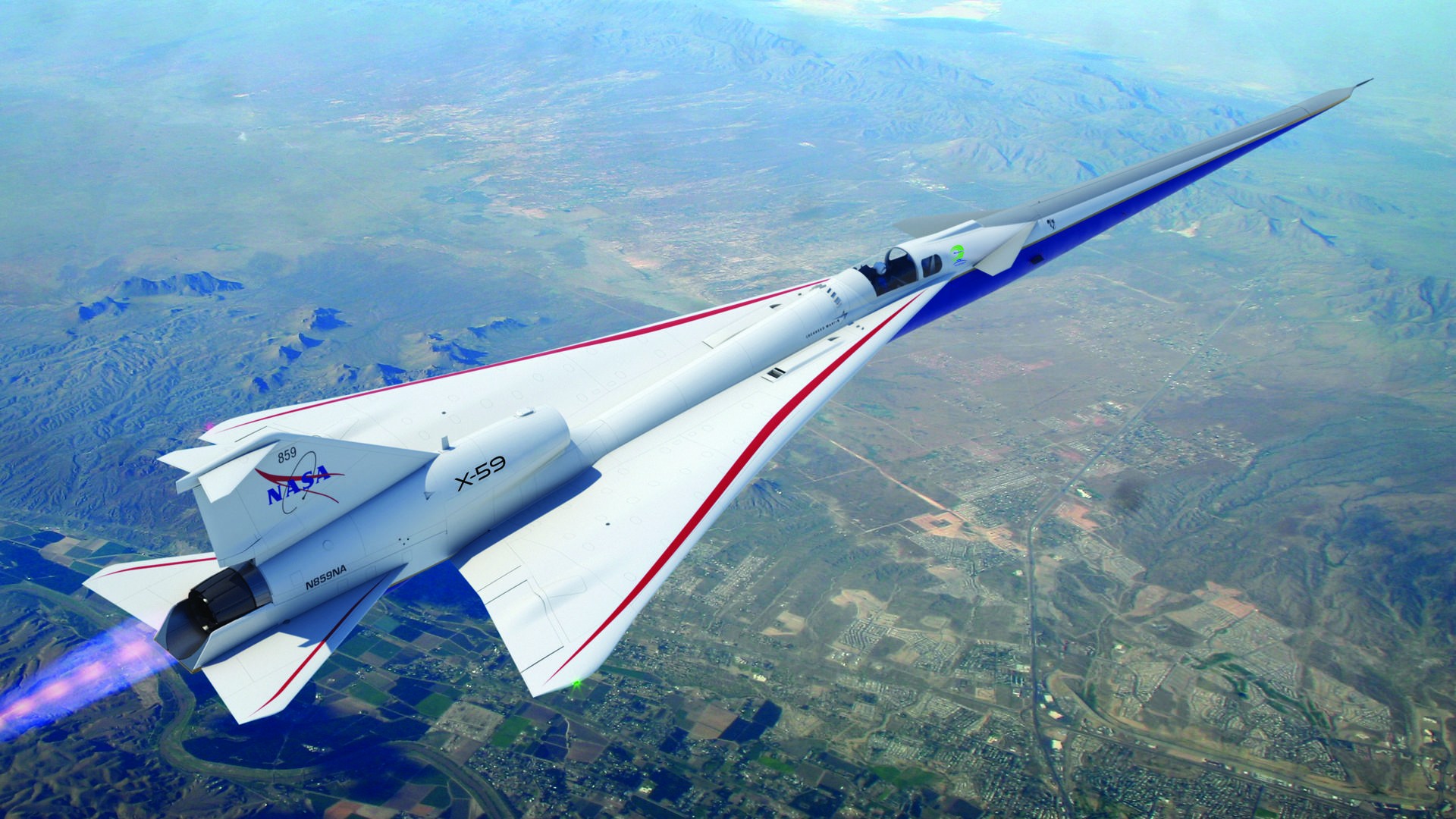Blog Credit: Trupti Thakur
Image Courtesy: Google
X-59 Quiet Supersonic Aircraft
Two decades after the last civilian supersonic jet, NASA and Lockheed Martin have unveiled a new experimental aircraft that aims to tackle the problematic sonic boom issue hindering faster-than-sound travel. Rather than loud booms, NASA’s X-59 jet produces a gentler “thump”.
Noisy Booms Troubled Historic Supersonic Jets
The powerful sonic boom shockwaves released by supersonic flight have disturbed people on the ground and even damaged structures when jets fly low. But noise was not the sole factor for discontinuing iconic civilian jets like the Concorde.
Only over-water supersonic flight was permitted given boom concerns. Technical faults and limited routes also quickened the retirement of the handful of past supersonic passenger aircraft.
Softening Shockwaves
There are potential ways to suppress noisy booms. A key one is optimally shaping the aircraft and the sound waves it generates. Experiments have tweaked jet noses before to redirect and soften sound bursts.
The X-59 uses special wings interacting with other design aspects to carefully control shockwave timing, strength and direction. This converts loud booms into gentler thumps.
Seeking Regulator Approval
Through flight tests that began in 2022, NASA hopes to demonstrate overland supersonic need not always produce intolerable noise. Public response surveys will share results with regulators to make the case for allowing faster civilian air travel.
If the X-59 fulfils its quieter supersonic travel premise, public sentiment along with supportive policies could enable reviving of faster-than-sound passenger jets while addressing earlier concerns.
Diving Deep Into It
NASA and Lockheed Martin formally debuted the agency’s X-59 quiet supersonic aircraft Friday. Using this one-of-a-kind experimental airplane, NASA aims to gather data that could revolutionize air travel, paving the way for a new generation of commercial aircraft that can travel faster than the speed of sound.
“This is a major accomplishment made possible only through the hard work and ingenuity from NASA and the entire X-59 team,” said NASA Deputy Administrator Pam Melroy. “In just a few short years we’ve gone from an ambitious concept to reality. NASA’s X-59 will help change the way we travel, bringing us closer together in much less time.”
Melroy and other senior officials revealed the aircraft during a ceremony hosted by prime contractor Lockheed Martin Skunk Works at its Palmdale, California facility.
The X-59 is at the center of NASA’s Quesst mission, which focuses on providing data to help regulators reconsider rules that prohibit commercial supersonic flight over land. For 50 years, the U.S. and other nations have prohibited such flights because of the disturbance caused by loud, startling sonic booms on the communities below. The X-59 is expected to fly at 1.4 times the speed of sound, or 925 mph. Its design, shaping and technologies will allow the aircraft to achieve these speeds while generating a quieter sonic thump.
“It’s thrilling to consider the level of ambition behind Quesst and its potential benefits,” said Bob Pearce, associate administrator for aeronautics research at NASA Headquarters in Washington. “NASA will share the data and technology we generate from this one-of-a-kind mission with regulators and with industry. By demonstrating the possibility of quiet commercial supersonic travel over land, we seek to open new commercial markets for U.S. companies and benefit travelers around the world.”
With the rollout complete, the Quest team will shift to its next steps in preparation for the first flight: integrated systems testing, engine runs, and taxi testing for the X-59.
The aircraft is set to take off for the first time later this year, followed by its first quiet supersonic flight. The Quest team will conduct several of the aircraft’s flight tests at Skunk Works before transferring it to NASA’s Armstrong Flight Research Center in Edwards, California, which will serve as its base of operations.
“Across both teams, talented, dedicated, and passionate scientists, engineers, and production artisans have collaborated to develop and produce this aircraft,” said John Clark, vice president and general manager at Lockheed Martin Skunk Works. “We’re honored to be a part of this journey to shape the future of supersonic travel over land alongside NASA and our suppliers.”
Once NASA completes flight tests, the agency will fly the aircraft over several to-be-selected cities across the U.S., collecting input about the sound the X-59 generates and how people perceive it. NASA will provide that data to the Federal Aviation Administration and international regulators.
The X-59 is a unique experimental airplane, not a prototype – its technologies are meant to inform future generations of quiet supersonic aircraft.
At 99.7 feet long and 29.5 feet wide, the aircraft’s shape and the technological advancements it houses will make quiet supersonic flight possible. The X-59’s thin, tapered nose accounts for almost a third of its length and will break up the shock waves that would ordinarily result in a supersonic aircraft causing a sonic boom.
Due to this configuration, the cockpit is located almost halfway down the length of the aircraft – and does not have a forward-facing window. Instead, the Quest team developed the external Vision System, a series of high-resolution cameras feeding a 4K monitor in the cockpit.
The Quest team also designed the aircraft with its engine mounted on top and gave it a smooth underside to help keep shockwaves from merging behind the aircraft and causing a sonic boom.
Blog By: Trupti Thakur

17
JanX-59 Quiet Supersonic Aircraft
Jan 17, 2024Recent Blog
India’s Steps Into 6GMay 15, 2025
The New Accessibility Feature of AppleMay 14, 2025
The Digital Threat Report 2024May 13, 2025
The MADMAX ExperimentMay 12, 2025
The EntraID Data ProtectionMay 10, 2025




